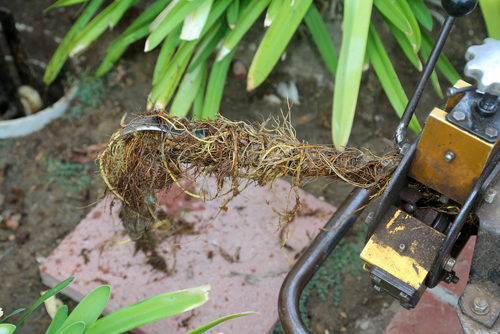Damage from sewage backup is a problem that we hope most Minneapolis homeowners will never experience. It typically starts as a sudden backup of gray or black water in bathrooms and basements. These unexpected, messy situations can have many different causes: Clogs or tree roots in pipes, damaged sewer lines, big storms, and more.
The water that comes from a sewage backup is the worst type of flooding, as it can contain storm water and human waste. It’s a critical problem that needs to be addressed immediately, and by professionals. Even if you are an exceptionally handy home or business owner, cleaning up sewage flooding yourself can put both your health and your property at risk. Here is what you need to know, and how to get the right help with these sudden, scary (and smelly) situations.
A sewage backup typically consists of category three water. This is the most contaminated and dangerous type of floodwater, containing contaminants like parasites, viruses, bacteria and fungi. Unprotected contact with a sewage backup can expose you to numerous diseases, such as hepatitis A, encephalitis, and E. coli, also known as Escherichia coli. According to the CDC, E. coli is one of the most common types of bacteria found in sewage.
Sewage contamination can occur when you come into direct contact with the actual water, and it can also be transmitted through the air in your property. A sewage backup can release air-borne contaminants, and inhaling these can lead to illnesses like gastroenteritis and asthma.
A sewage backup also leaves behind the ideal conditions for mold growth, as mold only needs moisture, organic material, and mild temperatures in order to start growing within as little as 24 hours. Exposure to mold can cause allergy and asthma symptoms, particularly in children and people with respiratory illnesses or compromised immune systems.
When you have a sewage backup in your home, you are faced with all of the typical water damage risks. Porous materials like wood, carpet, padding, and drywall can absorb water and become damaged. Your electrical and gas systems can become compromised, putting you at risk for electrocution and explosions. Even structural elements of your home like your basement, foundation, and walls can experience issues if water damage is not restored right away.
Water damage that contains sewage requires a more extensive restoration process than a situation that was caused by clean water. This is because of the many contaminants in sewage. Items that cannot be sterilized will need to be safely removed and replaced. There is also the greater potential for mold growth that we previously mentioned: When water damage involves sewage, you should always get help from a professional who can ensure that any mold issues have been correctly removed and remediated.
With all of the details we have shared above, it is clear that cleaning up after a sewage backup is not something that you should attempt on your own. Fortunately, there is help available to home or business owners that experience these messy, disruptive problems. Here are our best tips, for dealing with a sewage backup, in order of importance:
Any type of water or sewage damage gets worse with time. The longer you wait to deal with a flood or backup, the greater the damage to your home will be. At Green Clean, we are available to help 24/7, and have highly trained technicians and advanced equipment that can restore your property. Due to our years of experience, we can also partner with your agent and help with the insurance claims process.
We sincerely hope that your St. Paul property will never experience a sewage backup, but if you do, Green Clean is ready to assist you in getting your life back to normal. Contact us today to learn more.
Prev: Why Investing in Regular Air Duct and Carpet Cleaning Can Make Your Property Safer And More ComfortableNext: The Benefits Of Professional Water Damage Restoration: Part One: Health and LifestyleView All Resources